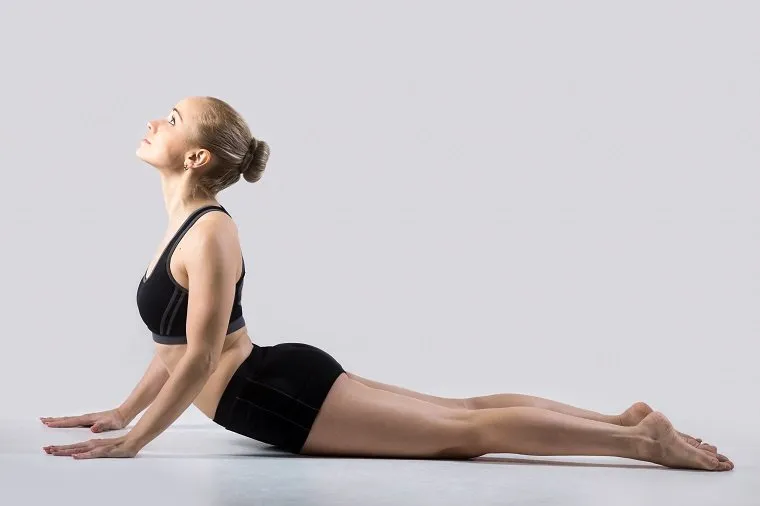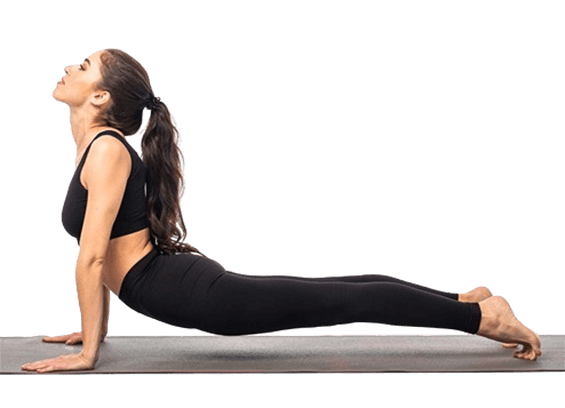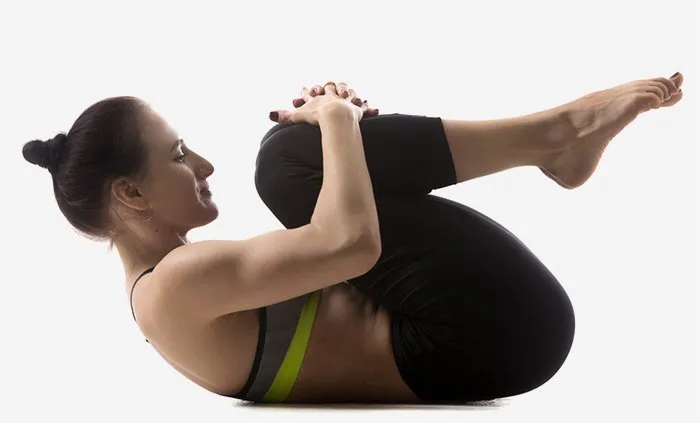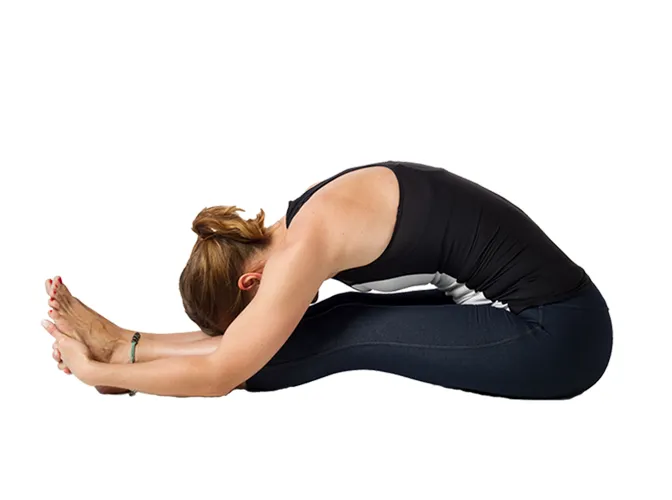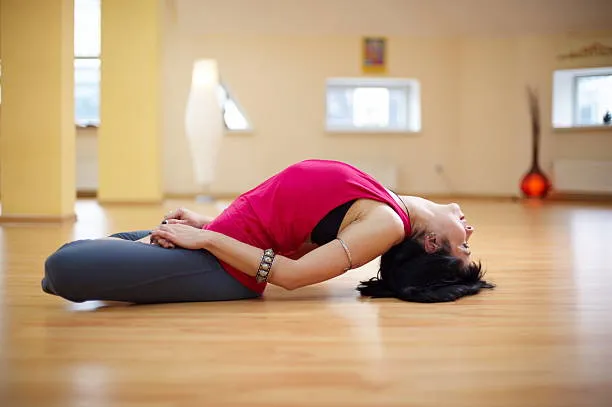On This Page
Bhujangasana – Introduction, Procedure and Benefits
Introduction
Bhujangasana also known as Cobra stretch Asana. In Hath Yoga and modern Yoga, this Asana is mentioned under reclining back bending Asana. This Asana represents the position of the cobra when it is most aware and alert about its surroundings. This Asana is also done under Surya Namaskar in steps 8 and step 20. This Asana stimulates abdominal organs, soothes sciatica, tones the buttocks, strengthens the spines, etc.
Gheranda Samhita, Dwitya Updesha, 42- 43
अंगुष्ठ नाभिपर्यन्तमधो भूमौ विनिनय सेत् ।
करतलाभ्यां धरां धृत्वा ऊदर्थ्व शीर्ष फणीव हि।।
देहाग्निर्वरद्धते नित्यं सर्वरोगविनाशनम् ।
जागर्त्ति भुजगी देवी साधनादू भुजगासनम्।।
नाभि से प्रारम्भ करें पैर के अंगूठे तक शरीर के निम्न भाग को सम्यक् रूप सेभूतल पर संस्थापित करते हुये दोनों करतलों (हथेलियों) द्वारां भूतल का अवलम्बन करते हुये फणी अर्थात् सर्प के फण के समान अपने शिरोदेश को ऊपर की ओर ऊँचा उठाना भुजंग आसन कहलाता है। इस भुजंग आसन की साधना करने से शरीर की अग्नि (जठराग्नि) दिनानुदिन बढ़ती जाती है, समस्त रोगों का विनाश होता है और भुजगी देवी अर्थात् कुण्डलिनी शक्ति जागृत होती है ।
Beginning from the navel to the toe, while setting the lower part of the body properly on the ground, with both the palms (palms), raising your head upwards like the hood of a snake, it is called Bhujang Asana. By practicing this Bhujang posture, the fire (jatharagni) of the body increases day by day, all diseases are destroyed and Bhujgi Devi i.e. Kundalini Shakti is awakened.
Procedure : How to perform Bhujangasana
- Lie flat on the stomach with the legs straight and the soles of the feet uppermost.
- Place the palms of the hands flat on the floor below and slightly to one side of the shoulders; the fingers should point forwards and the arms should be bent with the elbows facing backward.
- Rest the forehead on the ground.
- Close your eyes. Relax the whole body, especially the lower back. This is the starting position. Breathe out slowly and deeply.
- Then as you breathe in, raise the body in the way we will describe. Slowly bend your head backward so that the chin eventually points forwards and the back of the neck is compressed. Feel the stretch of the front part of the neck.
- Now the arms must be brought into play. Slowly raise the head and shoulders off the ground by progressively straightening the arms.
- Feel the flexion of the back roll down the spine starting from the neck region and working towards the lower back; try to feel the flexion of each vertebra throughout the movement. Remember, it is the arms that execute the movement.
- Keep the back and legs as relaxed as possible.
- Try to keep the navel in contact with the ground; if the navel is raised too high then the bend tends to be at the knees and not the back.
- Continue slowly to arch the back as far as flexibility will allow.
- In this position, the back of your head should point toward your feet. Your arms may or may not be straight; it depends on the flexibility of your back.
- You will feel a pleasantly painful sensation in the lower back; this is a good sign that you are doing the Asana correctly. Hold this final pose for as long as comfortable.
- On exhalation return to the starting position.

Have A Health Issue?
Consult Online
- Dr. Sahil Gupta (B.A.M.S., M.H.A.)
Ayurvedic Allergy Specialist
CEO & Founder of IAFA®
Benefits of Bhujangasana
- This Asana increases the flexibility of the back and massages the abdominal organs.
- It gives many other similar benefits. In particular, it influences the kidneys and the adrenal glands. The kidneys purify our blood.
- This helps give our mental and physical constitution more stability.
- This Asana massages the organs of the abdomen and pelvis such as the stomach, pancreas, liver, gall bladder, and sexual and eliminative organs. In particular, we recommend it for treating female disorders such as leucorrhea, dysmenorrhea, and amenorrhoea as it notably tones the ovaries and uterus.
- Those people who suffer from a slipped disc or sciatica can also benefit from this Asana, but they should be careful.
- The thyroid gland is also regulated. This has a large part to play in maintaining a healthy body and its optimum condition is essential.
- Bhujangasana expands the chest, which improves one’s breathing habits.

